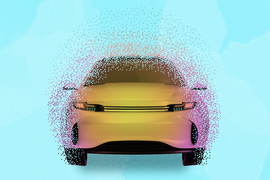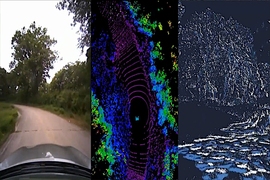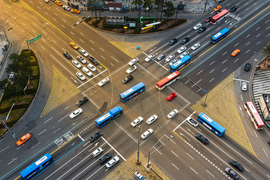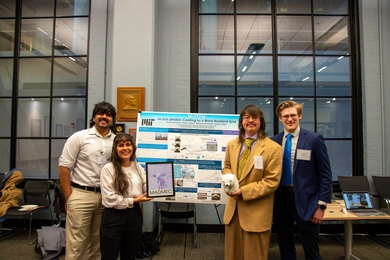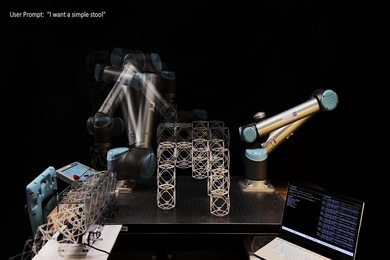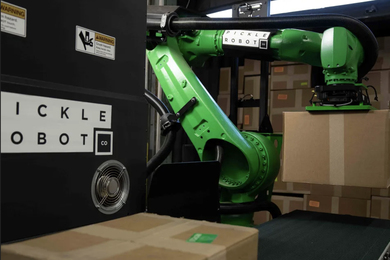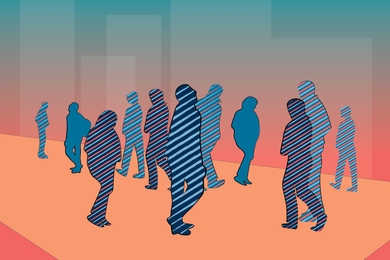When we think of getting on the road in our cars, our first thoughts may not be that fellow drivers are particularly safe or careful — but human drivers are more reliable than one may expect. For each fatal car crash in the United States, motor vehicles log a whopping hundred million miles on the road.
Human reliability also plays a role in how autonomous vehicles are integrated in the traffic system, especially around safety considerations. Human drivers continue to surpass autonomous vehicles in their ability to make quick decisions and perceive complex environments: Autonomous vehicles are known to struggle with seemingly common tasks, such as taking on- or off-ramps, or turning left in the face of oncoming traffic. Despite these enormous challenges, embracing autonomous vehicles in the future could yield great benefits, like clearing congested highways; enhancing freedom and mobility for non-drivers; and boosting driving efficiency, an important piece in fighting climate change.
MIT engineer Cathy Wu envisions ways that autonomous vehicles could be deployed with their current shortcomings, without experiencing a dip in safety. “I started thinking more about the bottlenecks. It’s very clear that the main barrier to deployment of autonomous vehicles is safety and reliability,” Wu says.
One path forward may be to introduce a hybrid system, in which autonomous vehicles handle easier scenarios on their own, like cruising on the highway, while transferring more complicated maneuvers to remote human operators. Wu, who is a member of the Laboratory for Information and Decision Systems (LIDS), a Gilbert W. Winslow Assistant Professor of Civil and Environmental Engineering (CEE) and a member of the MIT Institute for Data, Systems, and Society (IDSS), likens this approach to air traffic controllers on the ground directing commercial aircraft.
In a paper published April 12 in IEEE Transactions on Robotics, Wu and co-authors Cameron Hickert and Sirui Li (both graduate students at LIDS) introduced a framework for how remote human supervision could be scaled to make a hybrid system efficient without compromising passenger safety. They noted that if autonomous vehicles were able to coordinate with each other on the road, they could reduce the number of moments in which humans needed to intervene.
Humans and cars: finding a balance that’s just right
For the project, Wu, Hickert, and Li sought to tackle a maneuver that autonomous vehicles often struggle to complete. They decided to focus on merging, specifically when vehicles use an on-ramp to enter a highway. In real life, merging cars must accelerate or slow down in order to avoid crashing into cars already on the road. In this scenario, if an autonomous vehicle was about to merge into traffic, remote human supervisors could momentarily take control of the vehicle to ensure a safe merge. In order to evaluate the efficiency of such a system, particularly while guaranteeing safety, the team specified the maximum amount of time each human supervisor would be expected to spend on a single merge. They were interested in understanding whether a small number of remote human supervisors could successfully manage a larger group of autonomous vehicles, and the extent to which this human-to-car ratio could be improved while still safely covering every merge.
With more autonomous vehicles in use, one might assume a need for more remote supervisors. But in scenarios where autonomous vehicles coordinated with each other, the team found that cars could significantly reduce the number of times humans needed to step in. For example, a coordinating autonomous vehicle already on a highway could adjust its speed to make room for a merging car, eliminating a risky merging situation altogether.
The team substantiated the potential to safely scale remote supervision in two theorems. First, using a mathematical framework known as queuing theory, the researchers formulated an expression to capture the probability of a given number of supervisors failing to handle all merges pooled together from multiple cars. This way, the researchers were able to assess how many remote supervisors would be needed in order to cover every potential merge conflict, depending on the number of autonomous vehicles in use. The researchers derived a second theorem to quantify the influence of cooperative autonomous vehicles on surrounding traffic for boosting reliability, to assist cars attempting to merge.
When the team modeled a scenario in which 30 percent of cars on the road were cooperative autonomous vehicles, they estimated that a ratio of one human supervisor to every 47 autonomous vehicles could cover 99.9999 percent of merging cases. But this level of coverage drops below 99 percent, an unacceptable range, in scenarios where autonomous vehicles did not cooperate with each other.
“If vehicles were to coordinate and basically prevent the need for supervision, that’s actually the best way to improve reliability,” Wu says.
Cruising toward the future
The team decided to focus on merging not only because it’s a challenge for autonomous vehicles, but also because it’s a well-defined task associated with a less-daunting scenario: driving on the highway. About half of the total miles traveled in the United States occur on interstates and other freeways. Since highways allow higher speeds than city roads, Wu says, “If you can fully automate highway driving … you give people back about a third of their driving time.”
If it became feasible for autonomous vehicles to cruise unsupervised for most highway driving, the challenge of safely navigating complex or unexpected moments would remain. For instance, “you [would] need to be able to handle the start and end of the highway driving,” Wu says. You would also need to be able to manage times when passengers zone out or fall asleep, making them unable to quickly take over controls should it be needed. But if remote human supervisors could guide autonomous vehicles at key moments, passengers may never have to touch the wheel. Besides merging, other challenging situations on the highway include changing lanes and overtaking slower cars on the road.
Although remote supervision and coordinated autonomous vehicles are hypotheticals for high-speed operations, and not currently in use, Wu hopes that thinking about these topics can encourage growth in the field.
“This gives us some more confidence that the autonomous driving experience can happen,” Wu says. “I think we need to be more creative about what we mean by ‘autonomous vehicles.’ We want to give people back their time — safely. We want the benefits, we don’t strictly want something that drives autonomously.”

